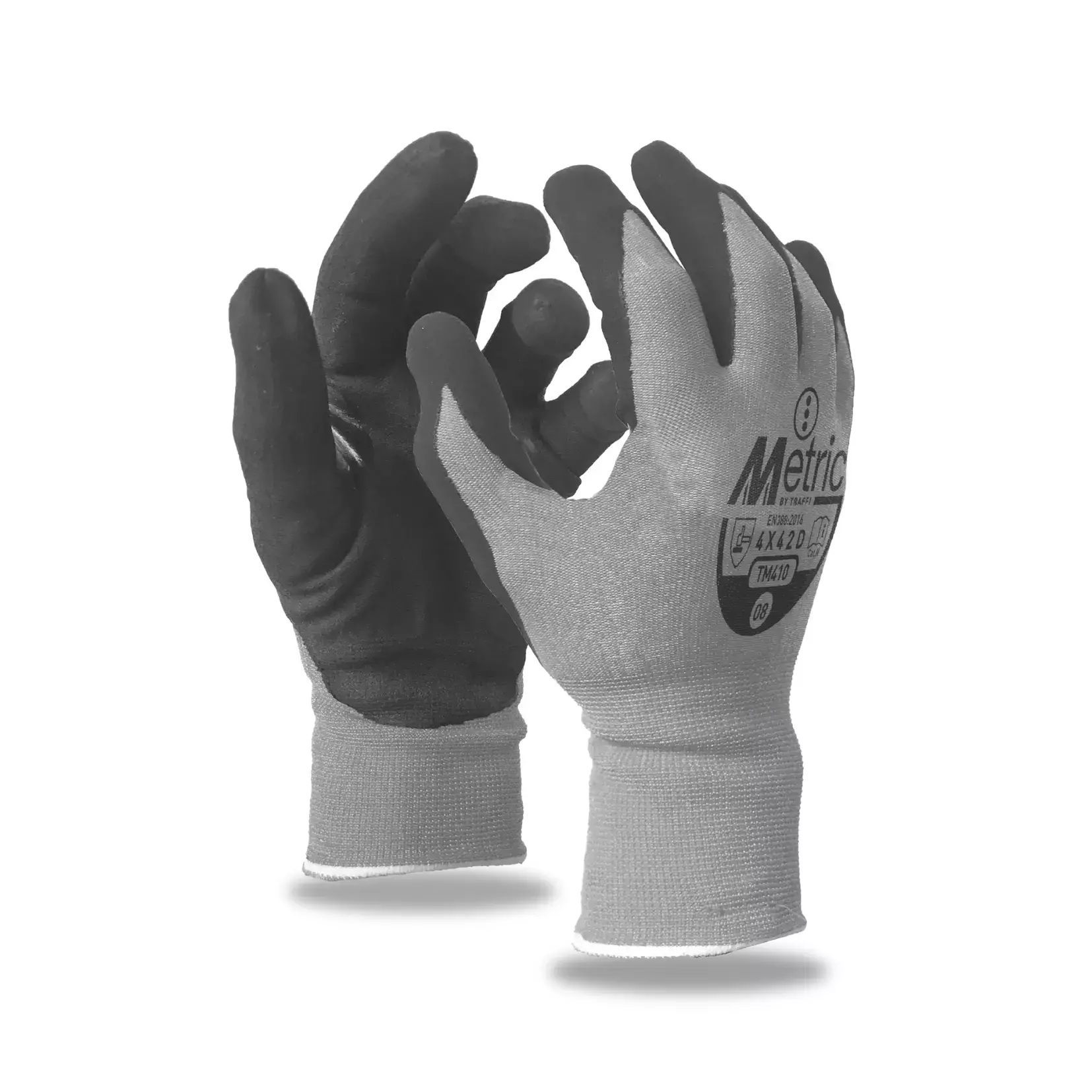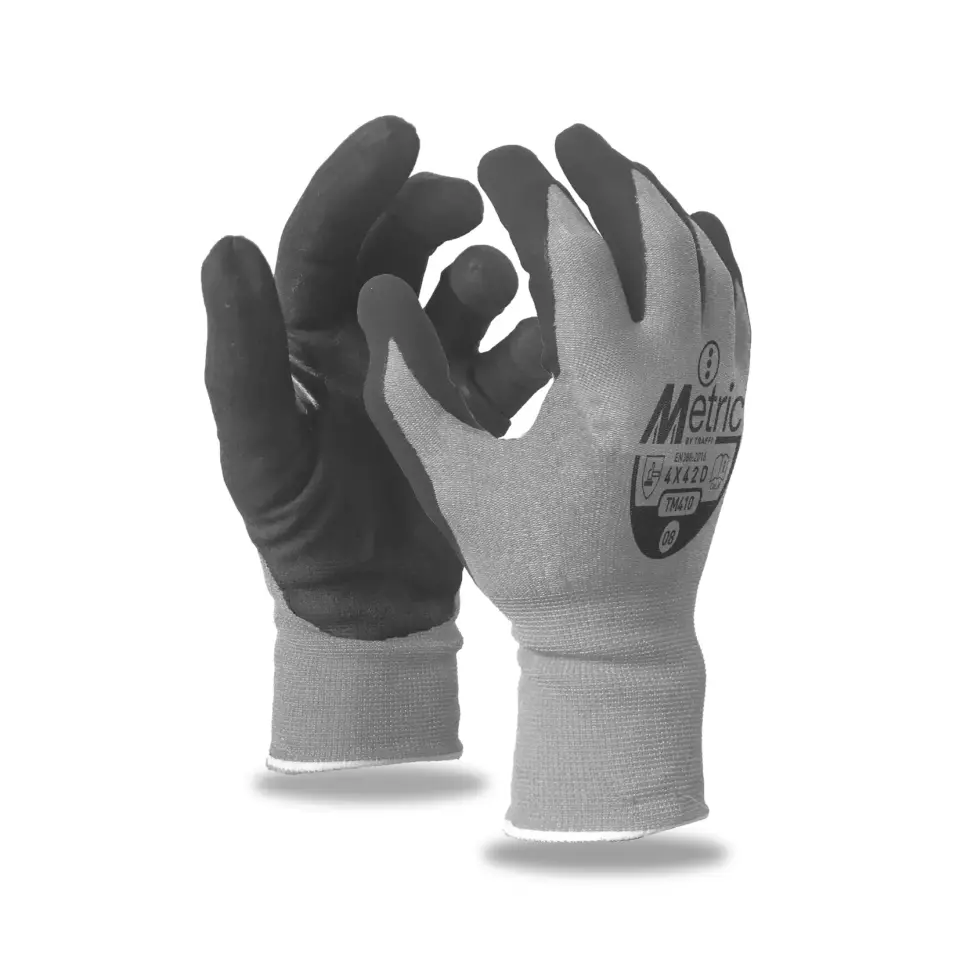
Features You'll Love

Cuff Style · Knit
A snug knit cuff provides a comfortable, secure fit that keeps debris out and your gloves in place.

Coating Material · Polyurethane (PU)
The substance applied to glove surfaces to enhance grip, durability, and protection, with different materials suited for various work conditions.

EN 388 · Tear Resistance Level 4, Puncture Resistance Level 2, Abrasion Resistance Level 4, Cut Resistance, ISO 13997 Level D
Offers the highest level of protection against tearing, withstanding a strong force before ripping.
Withstands moderate force from sharp objects like heavy-duty splinters or wires.
Offers the highest level of protection against intense rubbing and wear from rough materials.
Offers strong protection against cuts from utility knives, glass edges, and sheet metal.
Traffi
Metric Class D Cut Resistant Gloves, 10 pairs
Metric Class D Cut Resistant Gloves, 10 pairs
(22)
35,47 €
Price per 10 pairs
3,55 € / pair
Choose size
Shipping fee is 7,95 € for orders under 80,00 €
Features You'll Love

Cuff Style · Knit
A snug knit cuff provides a comfortable, secure fit that keeps debris out and your gloves in place.

Coating Material · Polyurethane (PU)
The substance applied to glove surfaces to enhance grip, durability, and protection, with different materials suited for various work conditions.

EN 388 · Tear Resistance Level 4, Puncture Resistance Level 2, Abrasion Resistance Level 4, Cut Resistance, ISO 13997 Level D
Offers the highest level of protection against tearing, withstanding a strong force before ripping.
Withstands moderate force from sharp objects like heavy-duty splinters or wires.
Offers the highest level of protection against intense rubbing and wear from rough materials.
Offers strong protection against cuts from utility knives, glass edges, and sheet metal.
Product description
The product description has not been specified